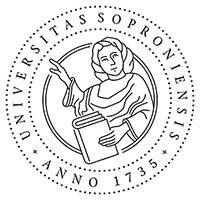New Dimensions in the Interpretation of Early Childhood
DOI:
https://doi.org/10.17165/TP.2017.3.14Abstract
The period up to eight years is considered to be the peak time for brain development. From birth to about the age of eight the brain is a super-sponge. This is the brain's most absorbent stage, where it actively learns from its environment. “Windows of opportunity” are sensitive periods in children’s lives when specific types of learning take place. Information flows easily into the brain through 'windows' that are open for only a short duration. Then the 'windows' close, and much of the fundamental architecture of the brain is completed. Scientists are continually learning more about how young children’s brains develop. At the same time, teachers are looking for effective strategies to help children use their brains to their fullest capacity. This paper also contributes to this dialogue by summarizing what we already know about the learning process in the brain and suggests how it might form the teaching and learning process in the classroom.
Literaturhinweise
Ádám, Gy. (2004). A rejtőzködő elme. Budapest: Vince Kiadó.
Battro, A. M. (2013). The Educated Brain: Essays in Neuroeducation. Cambridge: Cambrigde University Press. https://doi.org/10.1111/mbe.12025
Bruer, J. T. (1999). The Myth of the First Three Years. A New Understanding of Early Brain Development and Lifelong Learning. New York: The Free Press.
Charlesworth, R. (2013). Understanding Child Development. Belmont, USA: Wadsworth.
Cséfalvay, Z. (1990). Térképek a fejünkben. Budapest: Akadémiai Kiadó.
Diamond, M. & Hopson J. (1999). Magic Trees of the Mind: How to Nuture your Child's Intelligence, Creativity, and Healthy Emotions from Birth Through Adolescence. London: Penguin Books.
Evangelou, M., Sylva, K. & Kyriacou, M. (2009). Early Years Learning and Development. Research Report. Oxford: University of Oxford.
Goleman, D. (1997). Érzelmi intelligencia. Budapest: Háttér Kiadó.
Hámori, J. (2005). Az emberi agy plaszticitása. Magyar Tudomány, 1, 43-51.
Kluge, N. (2003). A gyermeklét antropológiája. Budapest: Animula Kiadó és Magánéleti Kultúra Alapítvány.
Montessori, M. (1936). The secret of childhood. London: New York Longmans, Green and Co.
Nahalka, I. (2002). Hogyan alakul ki a tudás a gyermekekben? Konstruktivizmus és pedagógia. Budapest: Nemzeti Tankönyvkiadó.
Papert, S. (1988). Észrengés. A gyermeki gondolkodás titkos útjai. Budapest: Számítástechnika-alkalmazási Vállalat.
Piaget, J. (1970). Válogatott tanulmányok. Budapest: Gondolat Kiadó.
Pléh, Cs. (2003). A természet és a lélek. Budapest: Osiris Kiadó.
Postman, N. (1983). The Disappearance of Childhood. London: W. H: Allen. https://doi.org/10.1016/S0002-7138(09)61523-5
Prout, A. (2005). The Future of Childhood. London- New York: Routledge – Falmer. https://doi.org/10.4324/9780203323113
Ranschburg, J. (2014). A világ megismerése óvodáskorban. Budapest: Saxum Kiadó.
Shore, R. (1997). Rethinking the Brain: New Insights into Early Development. New York, NY: Families and Work Institute. 26−27.
Sousa, D. A. (2010). Mind, Brain, and Education: Neuroscience Implications for the Classroom. Bloomington, USA: Solution Tree Press.
Sousa, D. A. (2011). The Best of Corwin: Educational Neuroscience. California, USA: Corwin Press.
Sprenger, M. B. (2008): The Developing Brain: Birth to Age Eight. California, USA: Corwin Press. https://doi.org/10.4135/9781483329758
Wasserman L. H. (2013): Early Childhood and Neuroscience - Links to Development and Learning. New York, USA: Springer.
Downloads
Veröffentlicht
Ausgabe
Rubrik
Lizenz
Copyright (c) 2017 László Varga

Dieses Werk steht unter der Lizenz Creative Commons Namensnennung - Nicht-kommerziell - Keine Bearbeitungen 4.0 International.












